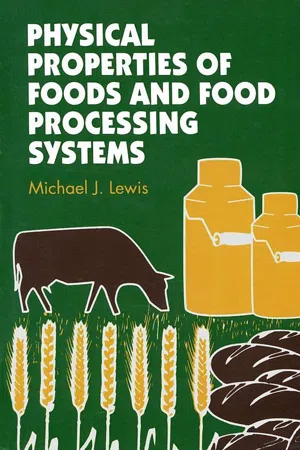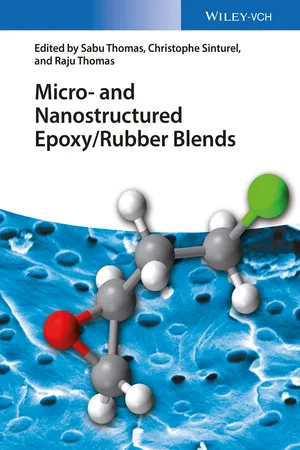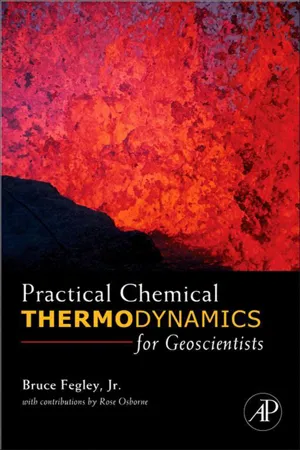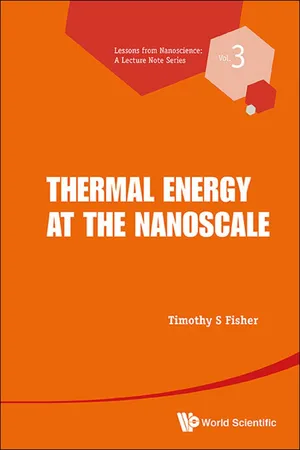Physics
Specific Heat of a Solid
The specific heat of a solid is the amount of heat energy required to raise the temperature of a unit mass of the solid by one degree Celsius. It is a measure of how effectively a substance can store and release thermal energy. Different solids have different specific heat capacities, which can affect their thermal properties and behavior when heated or cooled.
Written by Perlego with AI-assistance
Related key terms
Related key terms
1 of 4
Related key terms
1 of 3
11 Key excerpts on "Specific Heat of a Solid"
- eBook - ePub
- R.A. Edwards(Author)
- 2014(Publication Date)
- Pergamon(Publisher)
CHAPTER 7The Measurement of Heat Quantity
Publisher Summary
This chapter describes different methods of measurement of heat quantity. The specific heat of a substance at any temperature is defined as the quantity of heat required to raise the temperature of unit mass of that substance by one degree. The thermal capacity of a body or mass of material is the quantity of heat required to raise the temperature of that body or mass of material by one degree. The quantity of heat required to convert unit mass of the solid into liquid without change of temperature is called its latent heat of fusion. The latent heat of vaporization, or evaporation, is the quantity of heat required to convert unit mass of liquid into vapor without change of temperature, that is, at the boiling point. The latent heat of fusion of ice can be measured by a simple method of mixtures. An electrical method could be used using a calorimeter similar to that used for the electrical method for the determination of the specific heats of solids. The calorific value of a fuel is the quantity of heat liberated as a result of the complete combustion of unit mass of the fuel. A gas calorimeter is used to measure the calorific value of gas fuels or of liquid fuels, which easily vaporize.7.1 Specific Heat
The specific heat of a substance at any temperature is defined as the quantity of heat required to raise the temperature of unit mass of that substance by one degree . For example, if an infinitesimal quantity of heat dH is required to raise a mass m of a substance from a temperature θ to a temperature θ + dθ , then the specific heat s of the substance is defined as(7.1)Modern practice is to express specific heat in joules per gram per degC (J g−1 degC−1 ) or alternatively in joules per kilogram per degC (J kg−1 degC−1 ). Over quite considerable ranges of temperature the value of s for a material often varies only slightly, but in accurate work its variation may be regarded as significant. If s may be considered constant over a finite change Δθ in temperature, then the heat ΔH gained or lost by a mass m of the substance in rising or falling through the temperature range Δθ - eBook - ePub
Electronic Materials
Principles and Applied Science
- Yuriy M. Poplavko(Author)
- 2018(Publication Date)
- Elsevier(Publisher)
kl tensor.3.3 Crystal Heat Capacity
The heat capacity of body is a physical quantity defined as a ratio of the amount of heat dQ obtained by the body corresponding to an increase in its temperature dT :C = dQ / dT .The unit of heat capacity in SI is [J/K]. The concept of heat capacity is applicable to substances that are in various states of aggregation (solid, liquid, or gas) as well as to ensembles of particles and even quasiparticles (e.g., the heat capacity of electronic gas in metals or heat capacity of phonons in a crystal lattice). The value of heat capacity depends on the nature of a substance.Specific heat is the heat capacity per given unit of substance, which can be measured in kilograms, cubic meters, and moles. Depending on the quantification of unit heat applied, the mass, volume, and molar value of specific heat are distinguished. The mass specific heat is the amount of heat necessary to increase the temperature of a unit mass of material by one temperature unit; in SI, it is [J kg− 1 K− 1 ]. The volumetric specific heat , C V , is the amount of heat that is necessary to be applied to a unit volume of material to heat it by one temperature unit; in SI, it is measured in [J m− 3 K− 1 ], that is, joules per cubic meter and Kelvin. The molar specific heat , C μ , is the amount of heat that is necessary for 1 mol of the substance to be heated by 1°; in SI, it is [J/(mol K)], while in the Gaussian system, this specific heat is determined in [cal/(g-mol K)]. The vast majority of solids have specific heat close to 1 kJ/(kg K); for example, water has a relatively high heat capacity: 4.2 kJ/(kg K).In solids, both the crystal lattice and electrons contribute to the specific heat. For reasons that are explained further on, the electronic specific heat in metals at normal conditions is rather small; therefore the mechanisms of the lattice for specific heat are mainly considered (Chapter 4 - eBook - ePub
Doing Physics with Scientific Notebook
A Problem Solving Approach
- Joseph Gallant(Author)
- 2012(Publication Date)
- Wiley(Publisher)
It takes 4186 J of heat to raise the temperature of 1 kg of water by 1 °C, but only 128 J does the same to lead. Something is different! Water and lead are different substances and they have different specific heats.The specific heat is the amount of heat needed to raise the temperature of 1 kg of a substance by 1 °C. It’s a measure of heat per unit mass per unit temperature. Its metric unit is J/kg/ °C, but kJ/kg/ °C and kcal/kg/ °C are also used. Specific heat is a property of the substance, and it only depends on what the object is made of.The amount of heat needed to change an object’s temperature is(11.8)where m is the object’s mass, c is the specific heat of the substance the object is made of, and ΔT is the change in the object’s temperature.A positive Q indicates heat flows into the object; a negative Q means heat flows out of the object. Mass and specific heat are always positive, so the heat flow and temperature change always have the same sign. When heat flows in, ΔT and Q are both positive and the temperature increases. When heat flows out, ΔT and Q are both negative and the temperature decreases.How much heat must you add to 400 ml of 0 °C water to raise its temperature to 90 °C?Example 11.3Why do coffee cups have handles?Solution. Let’s use Evaluate Numerically and the definition of density to calculate the water’s mass.Use Evaluate and Eq. (11.8) to calculate the amount of heat. Notice the specific heat of water is 1 kcal/ (kg °C).Let’s repeat the calculation for aluminum, which has a significantly smaller specific heat.Water has a larger specific heat, so it needs more heat for the same temperature change. Water’s specific heat is larger than most common substances.Change in State: Latent Heat
Under ordinary circumstances, there are three states of matter - solid, liquid, gas - and heat must flow to transform matter from one state to another.The latent heat - eBook - ePub
Functional Dielectrics for Electronics
Fundamentals of Conversion Properties
- Yuriy Poplavko, Yuriy Yakymenko(Authors)
- 2020(Publication Date)
- Woodhead Publishing(Publisher)
natural change (not distorted by the symmetry of external action) in a crystal size, which reflects exactly the peculiarities of crystal internal bonds.It will be shown that the main thermal effects in crystals are interdependent, and it is expedient to begin our consideration with the specific heat.3.1 Specific heat of polar crystals
It is worth recalling that heat capacity of a body is the physical quantity defined as a ratio of the amount of heat dQ obtained by a body to correspondingly increase its temperature by dT : С = dQ /dT ; the commonly used unit of heat capacity in the SI system is joules/K (J/K). The specific heat is heat capacity per given unit of substance measured in kilograms, cubic meters, and moles. Mass specific heat is the amount of heat given to a unit mass of material to heat it up by 1 K and it is measured in J kg− 1 K− 1 . Respectively, volumetric specific heat C V is the amount of heat necessary to add it to unit volume of material and measured in J m− 3 K− 1 . Molar specific heat C μ is measured in J/(mol K), while in the Gauss system specific heat is determined in cal/(g mol K).As is known, specific heat near 0 K is extremely small, but afterwards C (T ) rapidly increases: below the Debye temperature (θ D ) heat capacity changes as C ~ T 3 due to a fast increase in the number of excited oscillations (phonons). However, in the region of normal temperatures (T > θ D ) in most crystals, possible lattice vibrations are already excited; therefore, a crystal's energy increases with temperature rise as the average energy k B T of normal vibrations; moreover, the specific heat of a crystal lattice should not be dependent on temperature: C ≈ const (in fact, C (T - M J Lewis(Author)
- 1990(Publication Date)
- Woodhead Publishing(Publisher)
8Sensible and latent heat changes
8.1 INTRODUCTION
The properties to be discussed in this chapter include specific heat, latent heat and specific enthalpy.These properties play an important role in heat transfer problems when heating or cooling foods. It is necessary to know the specific heat to determine the quantity of energy that needs to be added or removed. This will give an indication of the energy costs involved and in a continuous process will have an influence on the size of the equipment.Latent heat values, which are associated with phase changes, play an important role in freezing, crystallization, evaporation and dehydration processes.8.2 SPECIFIC HEAT
The specific heat of a material is a measure of the amount of energy required to raise unit mass by unit temperature rise. As mentioned in Chapter 7 , specific heat is temperature dependent. However, for the purpose of many engineering calculations, these variations are small and an average specific heat value is used for the temperature range considered.The units of specific heat are kilojoules per kilogram per kelvin (kJ kg−1 K−1 ), kilocalories per kilogram (kcal kg−1 K−1 ) or British thermal units per pound per degree Fahrenheit (Btu lb−1 degF−1 ). From the definitions of the different thermal units, the specific heat of water in the respective units is1 .0. kcal kg −1K −1or 4.18 kJ kg−1K −1or 1 Btu lb−1degF −1In a batch heating or cooling process, the amount of heat (energy) Q required or removed is given byIn a continuous process, the rate of heat transfer is given byQ = mass × average specific heat × temperature change= MC Δ TJ or kcal or BtuQ / t = mass flow rate × specific heat × temperature rangeThe units of Q /t are joules per second (J s−1 ), i.e. watts (W), or British thermal units per hour (Btu h−1 ). This is often termed the heating or cooling duty of the heat exchanger. If it is felt that this is not a sufficiently accurate procedure, the total energy requirement can be obtained by graphical integration. Specific heat is plotted against temperature; the total heat required to raise unit mass from T 1 to T 2 is given by ∫cp dTor the area under the curve (Fig. 8.1 ) This should, in most cases, be not too far removed from the value obtained by selecting a specific heat value at the average temperature (T 1 + T 2 )/2. If the relationship between the specific heat and temperature is known in terms of temperature, then the integral ∫cpdT can be evaluated directly, (see section 8.4- eBook - ePub
Quantity and Measure in Hegel's 'Science of Logic'
Hegel on Being
- Stephen Houlgate(Author)
- 2021(Publication Date)
- Bloomsbury Academic(Publisher)
34By the way, the fact that specific heat varies with temperature does not mean that it is not, after all, the “constant” exponent of the relation between the heat transferred to a body and the increase in the latter’s temperature. It is, indeed, constant; it is such, however, not only because it has a single numerical value at a given temperature, but also because it passes through a series of values that are characteristic of, and specific to, a body (or the material of which it is composed).Hegel’s remarks on specific heat were made in the first decades of the nineteenth century, but they anticipate insights that were developed at the start of the twentieth century by Albert Einstein and Peter Debye. In 1819 – in Hegel’s own lifetime – the French physicists, Pierre Louis Dulong and Alexis Thérèse Petit, formulated their famous law stating that the specific heat capacity of a body is (very nearly) proportional to its atomic weight and so is a fixed magnitude, which in turn implies that it is independent of temperature.35 In 1907, however, Einstein “developed a general theory of the variation of Cv with T for all solids at all temperatures, even down to 0 K” (where Cv is the heat capacity measured at a constant volume and T is the temperature).36 A few years later, Debye then proved that in solids “heat capacity decreases as T3 at low temperatures, in agreement with experimental observation” – and also with the speculative logic of measure.37 At higher temperatures the specific heat of solids is indeed relatively stable within a certain range (in accordance with Dulong and Petit’s law); yet at low temperatures their specific heat realizes the concept of a specifying measure in a Hegelian sense by being proportional to, and so a function of, a power, namely the cube of the temperature.38 It is beyond my competence to say any more about heat capacity. It is, however, remarkable that Hegel’s speculative logic should accord, explicitly and implicitly, with insights that later became central to modern physics.39 - eBook - ePub
- Michael M. Mansfield, Colm O'Sullivan(Authors)
- 2020(Publication Date)
- Wiley(Publisher)
Sections 11.3 and 11.4 , about a single specific heat capacity, without making any distinction as to whether the volume or the pressure is kept constant. On the other hand, as we shall see, the distinction betweencandPcis very important in the case of gases.VEnthalpy
When dealing with processes in which the pressure is kept constant, it is useful to work with a thermodynamic quantity called enthalpy which is defined as followsRecalling the first law of thermodynamics in the form given by Equation (11.11) , namelywe see that if P is constant this can be written asand henceNote that the unit of enthalpy is the same as that of energy.Study Worked Example 11.3
For problems based on the material presented in this section visit up.ucc.ie/11/ and follow the link to the problems.11.10 Change of phase: latent heat
As we have seen, when a solid is heated its internal energy increases. Since the heat capacity of a solid is temperature dependent, the temperature does not increase linearly, but nevertheless it increases steadily with increasing internal energy. This process does not continue indefinitely, however, as can be seen from Figure 11.13 , which shows how the temperature of a typical substance varies as energy is added steadily. At some temperature, the melting pointTMof the material, the solid will begin to melt. While the material is melting, heat is continually added to the system but no corresponding increase in temperature is observed. The melting process is an example of a change of phase; in this case the material is changing from the solid phase to the liquid phase. The heat energy required to melt the body is called the latent heat of fusion (LFin Figure 11.13 ). Once the body has fully melted and heat energy continues to be added, the temperature will begin to rise once more, although not generally at the same rate because the value of the specific heat capacity of the body changes when it becomes liquid. Again the temperature will cease rising when the liquid begins to boil, that is as it changes phase from liquid to vapour at its boiling pointTB. The heat energy required to change the body from the liquid phase to the vapour phase is called the latent heat of vaporisation (LVin Figure 11.13 ). The term enthalpy of transformation - eBook - ePub
- Sabu Thomas, Christophe Sinturel, Raju Thomas(Authors)
- 2014(Publication Date)
- Wiley-VCH(Publisher)
14 Thermal PropertiesVincent Sobotka, Didier Delaunay, Nicolas Boyard, Sabu Thomas and Poornima Vijayan P.In the absence of flow, heat transfers within the epoxy resin are described by the classical equation of heat diffusion:14.1In the above equation the term corresponds to the heat source released by the cross-linking, with ΔH the cross-linking enthalpy and the cross-linking kinetics. This kinetics, whose models are presented in Chapter 6, depends on temperature. With both equations being then strongly coupled, the description of the transfers requires their simultaneous solving. It is then necessary to know the evolution of the density (ρ), as detailed in previous chapters, but also of the specific heat capacity (cp ) and of the thermal conductivity (λ). These parameters depend on temperature and on cross-linking. With the direct measurement of these properties during the transformation being intricate, they are most of the time measured outside the transformation area. Models are then used to describe their evolution as a function of the cross-linking degree.14.1 Specific Heat
Specific heat capacity corresponds to the amount of heat required to raise the temperature of 1 g of a substance by 1 K. In the case of an isochoric evolution at variable pressure, the specific heat capacity cv = (∂u/∂T)v is used, u being the internal energy of the unit of mass. If the material encounters an isobaric evolution, the specific heat at constant pressure cp = (∂h/∂T)p , must be used, h being the enthalpy of the unit of mass. The equation of state of the material f(P,V,T) = 0 allows obtaining a relationship between cp and cv . Indeed the relation h = u + pv, with v being the specific volume, leads to cp − cv = d(pv)/dT. For solids and liquids, the variation of (pv) with the temperature is negligible, and cp and cv are generally considered equivalent. Indeed, the difference cp − cv - eBook - ePub
- Daniel D. Pollock(Author)
- 2020(Publication Date)
- CRC Press(Publisher)
CHAPTER 4Thermal Properties of Solids
4.1 INTRODUCTION
Atomic structure having been considered, the thermal properties of solids are introduced here because thermal vibrations of ions comprising a crystal affect such other physical properties as thermal, electrical, and magnetic characteristics. As a means of simplifying the treatment of lattice vibrations, only the ions of pure, elemental solids are considered. The additional contributions of the electrons to other physical properties are discussed in subsequent chapters. Thus, the solids are treated as crystalline arrays of ions with no free electrons.The simplest way of treating ions in this manner is to consider the atoms in a crystal to be covalently bonded. Under this condition the shared valence electrons are bonded very strongly to the atoms, forming ions. Crystals bonded in this way show minimal electrical and thermal conductivities; they are classed as insulators because of the extremely low number and mobility of any valence electrons that might be available (Section 5.8 ). In other words, these materials are virtually nonconductors of heat and electricity. Semiconductors also may be included for those temperature ranges in which the electron population of the conduction band is negligibly small (Chapter 11 ).The thermally induced vibrations of the ions are responsible for such important physical properties as heat capacity, temperature coefficient of thermal expansion, and thermal conductivity.While not included in this text, the understanding of thermally induced lattice vibrations provides a basis for a better comprehension of many solid-state reactions that include diffusion, allotropic changes, and order-disorder.On the basis of the foregoing, this topic considers only elemental solids. The heat capacity of a substance at constant volume is defined as4.2 HEAT CAPACITY
where U is the internal energy and T is the absolute temperature. This is the quantity of heat required to raise the temperature of 1 mol of a substance 1 K. The heat capacity at constant pressure isC V=(V)∂ U∂ T(4-1) - Bruce Fegley Jr.(Author)
- 2012(Publication Date)
- Academic Press(Publisher)
σ for liquid metals, molten oxides, and silicates is negligible until very high temperatures.Solids
The heat capacity (CP) of solids is the sum of several different contributions that vary with temperature and with the type of material (metals such as iron, semiconductors such as pyrite, and insulators such as forsterite). In general, the heat capacity of a solid can be written as(4-2)although not every component contributes to the heat capacity of every solid. The lattice heat capacity (Clat) is generally the largest term. It arises from vibrations of the atoms (or molecules) that make up a solid. To first approximation,Clat ∼3R per gram atom (i.e., per mole of atoms) for solids at room temperature, with notable exceptions being B, Be, diamond, and graphite, which have much smallerClatvalues. The thermal expansion term (CP − CV) is the next most important contribution to the heat capacity for most nonmetals and is ∼5% ofCPat room temperature. The electronic heat capacity (CE) or electronic component of solids generally does not become significant until high temperatures, but metals have significant electronic heat capacities at low temperatures. Other contributions to the heat capacity of solids can be made by magnetic transitions (CM), ordering and disordering effects in crystal lattices (Cλ ), and transitions between electronic energy levels with ΔE ∼ kT in compounds with d and f electrons such as those formed by transition metals, lanthanides, and actinides. These transitions are known as Schottky transitions, and the Schottky heat capacity contribution isCSch. Schottky transitions generally occur at temperatures close to absolute zero and are difficult to identify. For example, Krupka et al. (1985) found that bronzite (Mg0.85 Fe0.15 SiO3 ) has a heat capacity anomaly at 10–15 K. Other measurements ruled out a magnetic transition at these temperatures, and the anomaly can be fit with transitions between electronic energy levels of the d electrons in iron. Thus, it is believed to be a Schottky anomaly. We will discuss some of these heat capacity contributions in more detail in Section III- eBook - ePub
- Timothy S Fisher(Author)
- 2013(Publication Date)
- WSPC(Publisher)
Chapter 3Basic Thermal Properties3.1 IntroductionThe energy density analysis discussed in Section 2.5.3 provided important insights about the inter-relationship between carrier energy and carrier statistics for photons. A similar analysis for phonons and electrons (and their respective energy levels and statistics) will provide the basis for the property known as internal energy. This property should be familiar to those who have studied classical or statistical thermodynamics, as should the related quantity called specific heat. For a given collection of carriers, knowledge of its internal energy and dependence on temperature (which derives from its statistics) allows explicit calculation of volumetric specific heat as:where the normalizing quantity (i.e., the ‘amount’ of the ensemble by which u(T) is normalized) can be either volume or mass. In Eq. (2.37) from the previous chapter, volume is the normalizing quantity for u(T).The specific heat quantifies the ability of a set of energy carriers to store thermal energy relative to the temperature rise required to store this energy. At the same time, these carriers can move within a material or control volume and while doing so transport thermal energy. Consequently, the average speed with which the carriers move combined with the amount of energy that they carry provides the foundation of the important thermal transport property known as thermal conductivity. We develop these concepts in the present chapter for the carriers of most interest here—phonons and electrons.3.2 Specific HeatThe most general expression for the extensive (i.e., not specific, or intensive) internal energy U is:where we have neglected zero-point energy. The foregoing equation is the summation form of the integral expression (Eq. (2.34) ) used in the derivation of Planck’s law for photons, in which the concept of density of states was employed somewhat obsequiously to convert sums to integrals. This duality between summative and integral forms of quantities will persist throughout subsequent analysis both because of various preferences that have evolved in different communities of theorists and because sometimes the summative form is more analytically convenient than the integral form and vice versa
Index pages curate the most relevant extracts from our library of academic textbooks. They’ve been created using an in-house natural language model (NLM), each adding context and meaning to key research topics.
Explore more topic indexes
Explore more topic indexes
1 of 6
Explore more topic indexes
1 of 4










